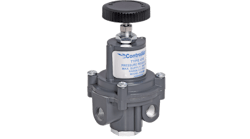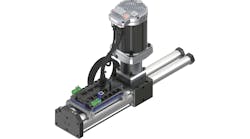Hydra-Cell LACT Unit Pumps for Oil & Gas
Hydra-Cell Seal-less Pumps for Lease Automatic Custody Transfer (LACT) units measure the quantity and quality of oil and gas transferred from the production field to the pipeline and can also be used to process produced water. Four models with multiple configurations are currently available with maximum flow rates ranging from 1251 to 5383 Barrels Per Day (BPD) or 36.5 to 157 gpm (138 to 594 lpm) and maximum discharge pressures from 700 to 2100 psi (48 to 145 bar).
The seal-less design of Hydra-Cell separates the hydraulic end from the fluid end, so there are no seals or packing to leak, wear, adjust or replace. This results in less downtime, less environmental containment costs, and less annual maintenance compared to other pumping technologies, according to Wanner Engineering. In addition, Hydra-Cell can handle sand or other solids up to 800 microns in size without fine filtration. This avoids equipment failures when the frac flow-back sand has not been removed from the well. The seal-less design also enables Hydra-Cell to pump water-thin fluids without having to adjust the pump speed.
Patented diaphragm position control protects Hydra-Cell pumps and enables operation in case of a closed inlet. Since the process fluid is not used for lubrication, a Hydra-Cell pump can run dry indefinitely, the company states. Accurate control of the flow rate is provided by varying the pump speed over a wide range of discharge pressures and fluid viscosities. Hydra-Cell pumps also deliver higher volumetric efficiency than other technologies when pumping low-viscosity crude oils.
The Hydra-Cell Q155 Series has a flow capacity of 5383 BPD and maximum discharge pressure of 2100 psi (145) bar. The T100 Series has a flow capacity of 3292 BPD and maximum discharge pressure of 2100 psi (145 bar). The D66 Series has a flow capacity of 2253 BPD and maximum discharge pressure of 700 psi (48 bar). The D35 Series has a flow capacity of 1251 BPD and maximum discharge pressure of 1200 psi (83 bar). All models feature a compact vertical V-belt skid design for a smaller installation footprint and are available in a variety of manifold, valve, and diaphragm materials for special requirements, such as, if hydrogen sulfide is present, Wanner Engineering says.





